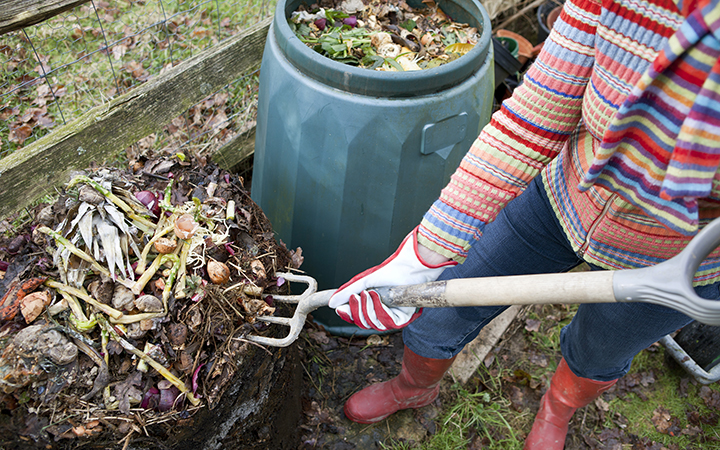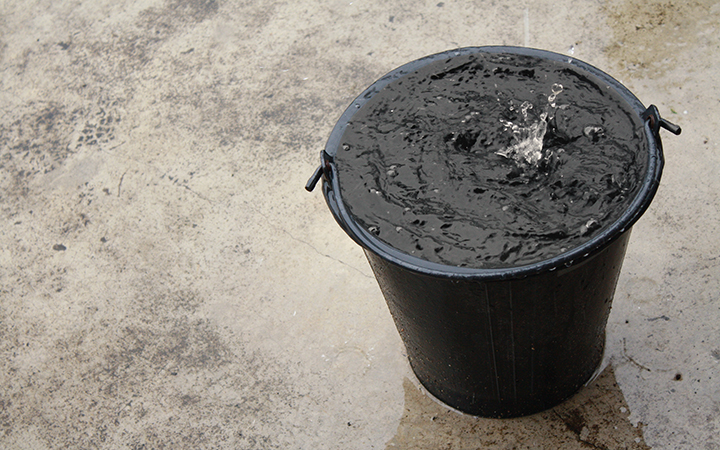Compost is filled with beneficial microorganisms and nutrients, and you can take composting one step further by steeping it in aerated water. This process, called “compost tea,” extracts the microorganisms and soluble nutrients into a water “tea” solution. The goal of compost tea is to introduce nutrients, fungal colonies, and beneficial bacteria to either the soil or the foliage of your cannabis plant to aid its growth and protect it from harmful disease.
Using compost tea for cannabis hasn’t been adopted by growers until relatively recently, but it’s a great way to help grow organic cannabis at home. Organic compost tea benefits the cannabis plant by protecting it against various harmful elements and providing rich nutritional elements.
Compost tea should never be a 100% replacement for all soil additives, and there are still nutrients you should use for growing cannabis. But, when used as a soil drench, it can still be a great complement for other nutrients. And if you use compost tea as a foliar spray, it can provide some of its abundant micronutrients to cannabis via absorption through the leaves’ stomata.
What are the Benefits of Compost Tea?

The goal of brewing compost tea is to introduce microorganisms to promote bigger, stronger, and more resilient plants. Spraying your cannabis plants with compost tea can place beneficial bacteria on the plants that are thought to crowd out bad bacteria and help strengthen the plant’s abilities to suppress diseases. When applied to soil, you’re adding to the soil food web by introducing a healthy population of microorganisms that are aerobic in nature. These organisms hold nutrients, aerate the soil, aide water retention, increase nutrient absorption in the plant, help grow healthy roots, and help prevent diseases.
However, the benefits of compost tea are debated in the agricultural world. Many gardeners report quality results from using compost tea, while others derive no benefits greater than you would see from applying compost. The uncertainty lies in whether or not growing and developing populations of microorganisms in the tea actually benefits the plants and can prevent disease.
Personally, I’ve used compost tea regularly in gardens as I fully support the practice and believe in the benefits. Cannabis is developing into an industry where the use of pesticides is strongly regulated. Accordingly, it’s crucial to take preventative steps to stop diseases before they occur, and compost tea might be your solution. The cannabis community is filled with conscious individuals who are connected to what they grow. This connection has always left me wanting to improve upon the natural ecosystem that we benefit from and explore ways to do so organically and sustainably.
Compost Tea Key Ingredients: Your Recipe for Healthy Cannabis Plants

In order for your organic compost tea to fully benefit your cannabis plant, you need to ensure you use the correct recipe and make it properly. A healthy compost tea pulls the soluble nutrients and microorganisms from compost; this includes bacteria, fungi, protozoa, and nematodes. Nematodes do not have a life cycle that is rapid enough to increase their population in the time it takes to brew a tea. However, bacteria, fungi, and protozoa can all increase their populations with the right foods and conditions.
Below are five key compost tea ingredients recommended by the Beneficial Living Center located in Arcata, California, to create a successful tea that will work best for your cannabis.
1. Compost
Compost is the base for the tea, and a healthy compost should have large populations of microorganisms and nutrients. Sourcing your compost locally will help ensure the organisms in the compost are used to the local pathogens. Compost that contains developed mycelium (fungal colonies) populations will help aid the development of fungal growth in the tea.
2. Worm Castings
Worm castings are the byproduct expelled after a worm digests organic material. Castings provide a high density of nutrients in a broken-down, refined form that is readily available for the plant to consume. Worm castings also introduce microorganisms.
3. Fish Hydrolysate
Fish hydrolysate is produced by breaking down fish and crustaceans to create a nitrogen-dense product. Crustacean exoskeletons also have chitin, which works as an immune booster for plants. Fish hydrolysate also helps feed and increase the fungi populations.
4. Kelp
Kelp serves as a source of food for fungi that grow while the tea is brewing. It’s also thought to provide a surface for fungal colonies to attach to and develop.
5. Molasses
Molasses serves as a source of food for bacteria that grow while the tea is brewing.
5 Steps for Making Compost Tea

Making your own compost tea at home is easy. Follow these five key steps and you’ll soon be feeding your cannabis plants a nutrient-rich mix that will keep them healthy and happy.
1. Build Your Compost Tea Brewer
Before you build your compost tea brewer, you need to consider the size of your cannabis garden. Most home gardens use a 5-gallon bucket. On the outside of the bucket, you’ll need to have an air pump connected to an aerator device at the bottom. The aerator and air pump will oxygenate the water so the microorganisms can breathe. You’ll also need a 400-micron mesh bag in which you can place the ingredients for the tea. While you can buy pre-built tea brewers, you can also easily make your own for a very affordable price.
2. Build Your Schedule
Tea brewing takes time, so it’s important to figure out when you want to apply the tea. Most teas generally take 24-36 hours to brew. You don’t want to let your tea brew for too long because the microorganism populations will develop to a point where they won’t have enough oxygen or space to live and will begin to die, which can damage your tea.
That being said, only start a tea when you know you’ll have time to apply it within 36 hours of brewing it. If you’re going to use it as a foliar spray, you want to time it so you can apply the compost tea in the evening or morning when the temperature is low and the sunlight is not direct. This period is also when the stomata (nutrient receptors on your plant’s foliage) are open to receive the nutrients.
3. Fill Your Compost Tea Bag
When creating your first batch of tea, keep the solution simple. If your water is coming from city lines, allow it to sit and breathe so the chlorine can to break down. Beneficial Living Center tea recipes are a good place to find tea formulas. Once your tea is brewing, keep it out of direct sunlight and make sure the air pump is running and oxygen is being pushed through the water.
4. Finalize Your Compost Tea
There are multiple products that can be added in the middle of your brewing process, towards the end, or right before application. Food for bacteria and fungi can be added halfway through your brewing process to increase the growth of microorganisms. Furthermore, products like SeaGreen and Actinovate can be added before the tea is applied in your garden for additional benefits.
5. Applying Compost Tea on Cannabis
The tea can be applied to the roots or as a foliar spray on the leaves of the cannabis plant. You can dilute your tea with water at a ratio anywhere between 1:20 when applying it to the roots. A basic tea can’t harm or burn your plants, so you may apply a potent dose freely. As a foliar spray, compost tea is generally only diluted with water to 1:2.
Don’t use drip lines to apply the compost tea because the tea will cause the drip line to clog over time. It’s important to either gravity feed the tea or use a diaphragm pump (as opposed to a centrifugal pump) to avoid chopping up and disrupting the active microorganisms when you water.





